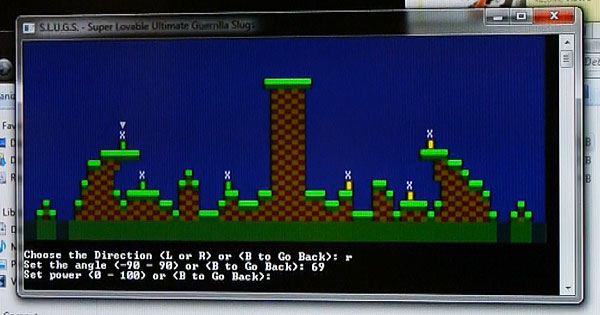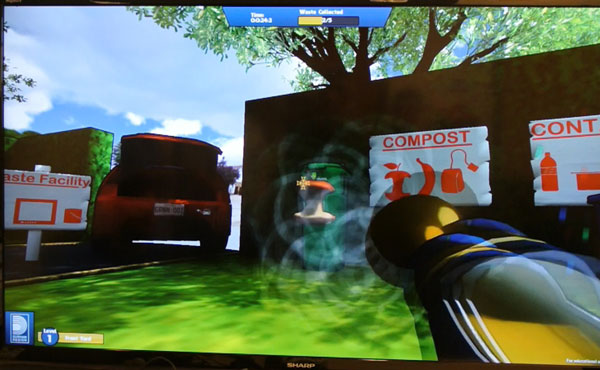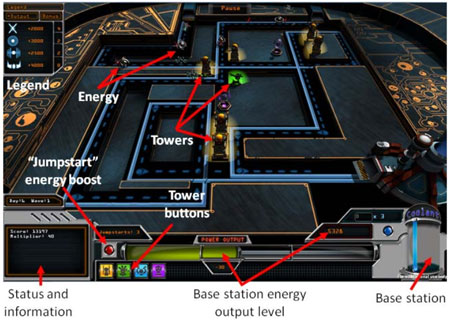3D, Virtual Reality, And Immersive Technology At The U Of OIT
The Game Development And Entrepreneurship Program's Project Demonstrations
There are two program majors that can earn you a Bachelor of Information Technology (Honours) degree at the University of Ontario Institute of Technology, and the Game Development and Entrepreneurship program is one of them. It's a four-year undergraduate study that teaches students to build videogames from scratch.
That's a tall order, as modern video games involve a host of disciplines: the courses include training in art, 3D modelling, animation, motion capture, design, interfaces, programming, creative writing, marketing, accounting, and even film-making. Students learn to build their own game engines and, later on, to leverage existing engines.
We had the pleasure of spending much of the day with Dr. Andrew Hogue, assistant professor and one of the five full-time teachers of the program (there are additional sessional instructors for some subjects). Andrew has a computer science degree with a masters in virtual reality with a focus on head-tracking systems, so he's also a strong advocate of immersive technologies.
He gave us a tour of the facilities, including the gaming and virtual reality lab, which features a full-body motion capture studio, passive stereoscopic virtual reality projection display, an arcade system for demoing games, and fully-featured audiometric room (sound booth).
Game Project Demonstrations
Despite the impressive facilities, our favorite part of the tour was the demo room, where we got to see some of the projects created by students in the program. It's inspiring to experience the innovations young minds at the UOIT have come up with. Here are some notable favorites:
The program follows the history of game development. The very first examples in the genre were text-based, so it makes sense that this is a first-year project. SLUGS is a fine example of the genre, and it reminded me of playing The Hitchiker's Guide to the Galaxy on a Commodore 64. Students learn how to integrate creative writing and scripts, while balancing technical requirements early in the program. By year two, participants are expected to zero in on their forte, and specialize further in years three and four.
This Banjo Kazooie-inspired platformer features a bear with a cybernetic rocket-launching arm. It was created in a mere two months by a couple of students who scratch-built the whole thing, including the graphics engine. That's impressive considering it rivals some of the first-generation Playstation and Nintendo 64 titles in graphics quality.
Get Tom's Hardware's best news and in-depth reviews, straight to your inbox.
Fourth-year students created this Web-based game by leveraging the commercially-available Unity engine. A local waste-management company partnered with the university to put together a first-person "sorter". A collection gun is used to pick up garbage and recyclable items, and then shoot them into the correct bin. On a side note, the students that built this title started an indie company, won a pitch competition, and recieved a $25,000 grant in addition to $25,000 worth of business services to help them grow.
Some games aren't just for fun; they can also serve as a powerful learning tool. Power Defense is a project developed for The Hospital for Sick Children to teach kids how to manage type 1 diabetes. The hospital wanted no death or violence, so the students came up with a tower defense game concept that mathematically simulates the mechanics of sugar and insulin in the bloodstream. Unlike typical tower defense games, some of the enemy units (sugar) must be allowed through, so a delicate balance must be struck. A study showed that the game was beneficial for teaching children about managing the illness.
The university is working with the Certified General Accountants of Ontario to provide an interactive game that helps teach important accounting concepts to its students. The challenge: how do you make make accounting fun and interesting? We watched a surprisingly detailed alpha build that follows a new business owner make typical start-up decisions. The player goes to the bank, decides to buy or rent a location, gathers data, organizes it, and prepares it. The software is designed with a simple interface so that users can concentrate on high-level decisions, and it gives lots of feedback if poor choices are made.
Current page: The Game Development And Entrepreneurship Program's Project Demonstrations
Prev Page Neil On Where Immersive Technology Is Heading Next Page Game Demonstrations Using Immersive TechnologiesDon Woligroski was a former senior hardware editor for Tom's Hardware. He has covered a wide range of PC hardware topics, including CPUs, GPUs, system building, and emerging technologies.
-
xkm1948 Hopefully the development of neuroscience will help sending signals directly to one's cortex without being processed by vision system. It is already doable in auditory system, although it is still indirectly stimulus of cortex. With a better understanding of cortex mapping, we may finally be able to get signals directly into brain without all the sensory organs!Reply -
clonazepam baby steps... baby steps. I dont see how that's possible without destroying healthy brain tissue during the learning process, so it'll never happen. Maybe some lab rats might get to enjoy some corridor run-throughs from the latest ID software, Quake 37 or something, but that's about it.Reply
I like the idea of several companies coming together to build a market to share with each other. That'd be nice. I've got a 3D Vision ready monitor and glasses. I messed around with it some when I first got it, but the quality of the experience from one game to the next was anything but consistent. Longer play sessions were interrupted by having to recharge the glasses too.
I'm still hopeful that we get there someday. It's nice to know there's a group of people out there to decide where "there" is, and help define it as we move toward it. -
piklar Bunch o Chickmagnets.... things will get interesting when Occy R goes retail , cant help but think they will be hard pressed to keep up with demand "how could you NOT want one?" exciting times ahead..Reply
-
bystander ReplyHopefully the development of neuroscience will help sending signals directly to one's cortex without being processed by vision system. It is already doable in auditory system, although it is still indirectly stimulus of cortex. With a better understanding of cortex mapping, we may finally be able to get signals directly into brain without all the sensory organs!
While that may be interesting, and very useful for the blind, part of the experience we have with 3D is processing it in the same manner we do in real life. Through our eyes.
I am a big fan of 3D Vision myself. I really wish all the poor versions of 3D never existed, so people would stop calling it bad or a gimmick, because in the right games, it is truly awesome. 3D Vision has a great mod community that fixes a lot of games too, using the Helix mod, for those into 3D, it is a must to use their mods. -
bnot "Back in 2007, 3D was in the hands of hardcore fringe enthusiasts, and reliable information was very had to come by." ?Reply
http://en.wikipedia.org/wiki/Virtuality_(gaming)
Virtuality is a line of virtual reality gaming machines produced by Virtuality Group, and found in video arcades in the early 1990s. The machines deliver real time (less than 50ms lag) gaming via a stereoscopic visor, joysticks, and networked units for multi-player gaming.
Initially introduced in 1991, the systems were developed for industry, where the first two networked systems were sold to British Telecom Research Laboratories to experiment with networked telepresence applications. Many other systems were sold to corporations including Ford, IBM, Mitsubishi and Olin. Professional virtual reality systems included the launch of the Ford Galaxy in virtual reality and a virtual trading floor for the London International Financial Futures and Options Exchange (LIFFE). However, the users' thrill of talking and mutually interacting with each other as virtual characters refocused the company's direction.....
http://www.cybermind.nl/Our%20Products/VR%20LBE%20Systems/visette_01.gif
-
Shankovich Wat UOIT is doing this stuff? LOL wow I should go visit. When I was applying to university 4 years ago they were offering insane entering scholarships because they were so new, $8000 a year if you had an average above 90%. Glad to see they're doing so well!Reply -
Verrin I went to UOIT for nuclear science. It's a neato school, the high costs of tuition is because you're renting a laptop with expensive software suites on it (cost is more for the software than the hardware). I sort of cringed everytime the author said "U of OIT". No one calls it thaaaaaat. It's UOIT.Reply






